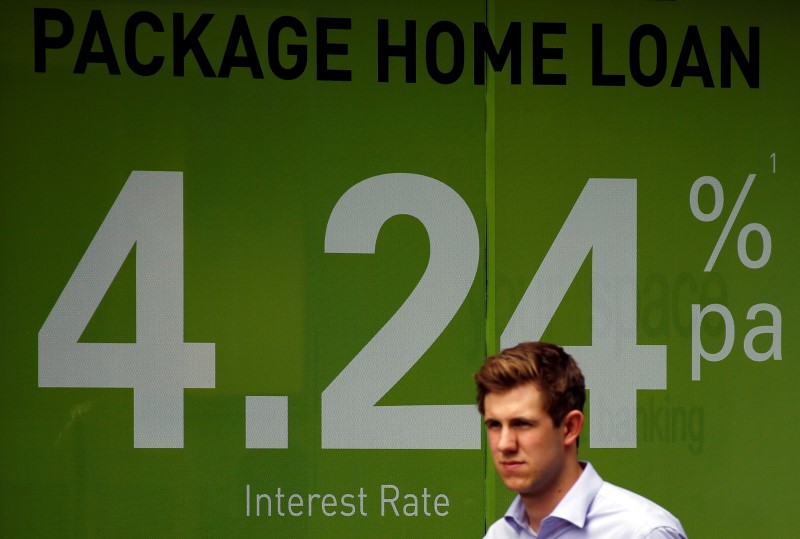By Wayne Cole
SYDNEY, Sept 1 (Reuters) - Australia has successfully used historically low borrowing costs to spark a boom in home building that has helped shepherd the economy through the dog days of a global mining downturn.
Yet the rush of new homes has also compressed rental yields to record lows and put downward pressure on already tepid inflation - an alarming trend rate cuts were supposed to remedy.
Rents were the single biggest factor behind the marked inflation slowdown this year that prompted a reluctant Reserve Bank of Australia (RBA) to further cut rates to a record low of 1.5 percent, juicing up the housing market even more.
"It's ironic. They cut rates to boost housing supply, but that's turned into a material drag on inflation," said George Tharenou, an economist at UBS.
The drag on inflation is likely to be protracted, given UBS now believes the building boom will not peak until 2018, and seemingly argues for even more stimulus.
"But there's a limit here. Easing would only push inflation down further," said Tharenou. "With all this housing activity adding to GDP growth, the economy just does not need more cuts."
Australia completed 190,000 new homes in 2015, 20 percent more than 10 years ago. Housing starts have since surged to an annualised 229,000, well above estimates of fundamental demand.
Approvals to build new homes surged over 11 percent in July, led by a 23 percent jump in apartments.
Residential construction directly added 0.4 percentage points to gross domestic product growth in the year to March, and bolstered by spending to furnish new homes, helped the economy boast overall growth of 3.1 percent.
IT'S ALL ABOUT CAPITAL RETURNS
All this supply has led to a sharp rise in vacancies. Investors in Australia typically buy for capital gains rather than rental returns - understandable given Sydney home prices have climbed around 60 percent in the past four years.
An added wrinkle is that investors who buy to let get a "negative gearing" tax break which allows them to offset rental losses against their other income, and there is also a capital gains tax discount on homes held for more than one year.
The result has been a flood of rental properties and a drop in rental yields to record lows. This matters because rents are a major component of consumer price inflation (CPI).
Rents make up around 7 pct of the CPI basket, more than either health or education. They also comprise an even larger 10 percent share of the core price measures the RBA focuses on.
Rental inflation was just 0.7 percent in the year to June, the weakest since the recession of the early 1990s and a world away from the 8 percent-plus seen as recently as 2008.
That was a major reason CPI inflation braked sharply to a 17-year low of 1.0 percent in the year to June, while core inflation stood at a record low of 1.5 percent.
Both were below the RBA's target band of 2 to 3 percent and directly triggered rate cuts in May and August.
Even after that easing, the RBA conceded inflation would likely not reach even the bottom of its target until late 2018 - with rents fingered as a leading culprit.
"The significant increase in apartment supply in train is likely to weigh on rental growth further, so the RBA will find it difficult to return inflation to its target band in the near term," said Tapas Strickland, an economist at NAB.
"Interestingly, seeking to return inflation more quickly to the target band by repeatedly cutting rates could be counter-productive as it could risk encouraging additional housing supply in a market where fears of oversupply are emerging."
